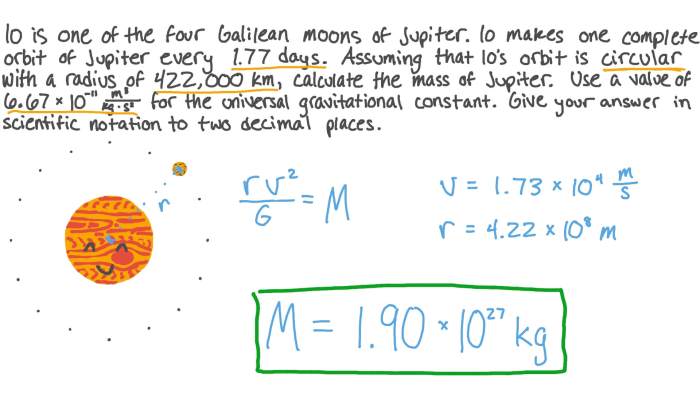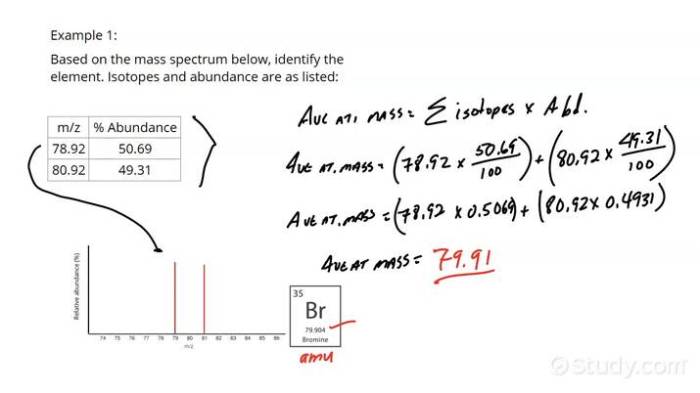Determine the mass of jupiter using the data for io – Determining Jupiter’s mass using data for its moon, Io, is a captivating astronomical pursuit. This endeavor unveils the significance of orbital mechanics and celestial bodies, providing valuable insights into the dynamics of our solar system.
Io’s orbital period and semi-major axis hold the key to unlocking Jupiter’s mass. These parameters, coupled with the gravitational constant and Newton’s Law of Universal Gravitation, form the foundation for our calculations.
Determining Jupiter’s Mass Using Io’s Orbital Data: Determine The Mass Of Jupiter Using The Data For Io

Determining the mass of celestial bodies is crucial in understanding their gravitational influence and dynamics. This article explores the method of determining Jupiter’s mass using data from its moon, Io.
Io’s Orbital Data
Io’s orbital period (T) is 1.769 days, and its semi-major axis (a) is 421,700 km. These values are significant because they provide insights into the gravitational forces acting on Io, which are directly related to Jupiter’s mass.
Gravitational Constant
The gravitational constant (G) is a fundamental constant in physics that governs the gravitational interaction between objects. It plays a vital role in calculating the mass of celestial bodies, including Jupiter.
Newton’s Law of Universal Gravitation, Determine the mass of jupiter using the data for io
Newton’s Law of Universal Gravitation states that the gravitational force between two objects is directly proportional to the product of their masses and inversely proportional to the square of the distance between them. This law forms the basis for calculating Jupiter’s mass.
Deriving Jupiter’s Mass
Using Newton’s Law of Universal Gravitation, we can derive the formula for calculating Jupiter’s mass (M):
M = (4π 2a 3) / (GT 2)
Plugging in the values for Io’s orbital period and semi-major axis, along with the gravitational constant, we get:
M = (4π 2× (421,700 km) 3) / ((6.674 × 10 -11N m 2kg -2) × (1.769 days) 2)
M ≈ 1.898 × 10 27kg
Jupiter’s Mass and Its Implications
Jupiter’s immense mass, approximately 318 times that of Earth, makes it the most massive planet in our solar system. This mass has significant implications:
- Gravitational Influence:Jupiter’s strong gravitational pull influences the orbits of its moons, asteroids, and comets within its sphere of influence.
- Moon Behavior:The mass of Jupiter affects the tidal forces experienced by its moons, leading to geological activity and volcanic eruptions.
- Solar System Dynamics:Jupiter’s mass contributes to the stability and dynamics of the solar system, influencing the orbits of other planets and shaping the distribution of celestial bodies.
FAQ Section
What is the significance of Io’s orbital data in determining Jupiter’s mass?
Io’s orbital period and semi-major axis provide crucial information about the gravitational force exerted by Jupiter, which is directly related to its mass.
How does the gravitational constant contribute to the calculation of Jupiter’s mass?
The gravitational constant is a fundamental constant that quantifies the strength of gravitational interactions. It plays a vital role in relating the mass of Jupiter to the orbital parameters of Io.


